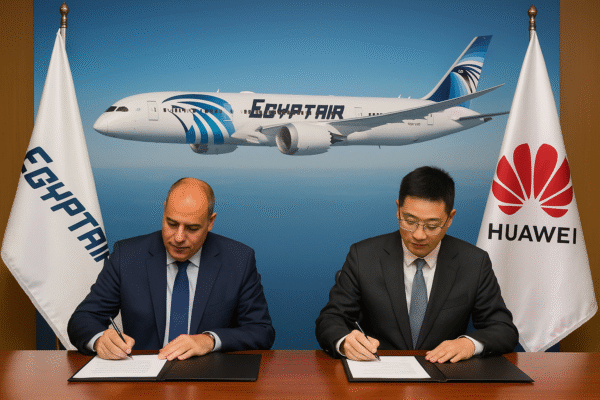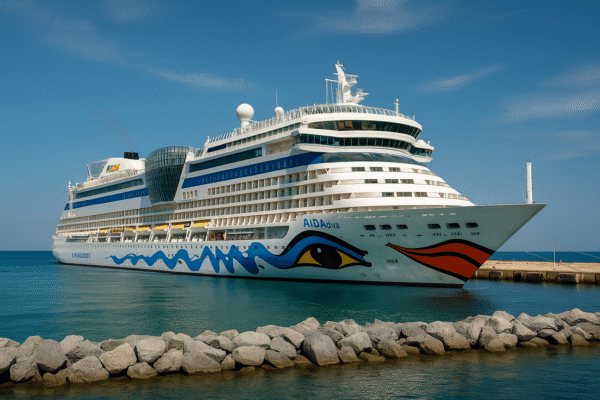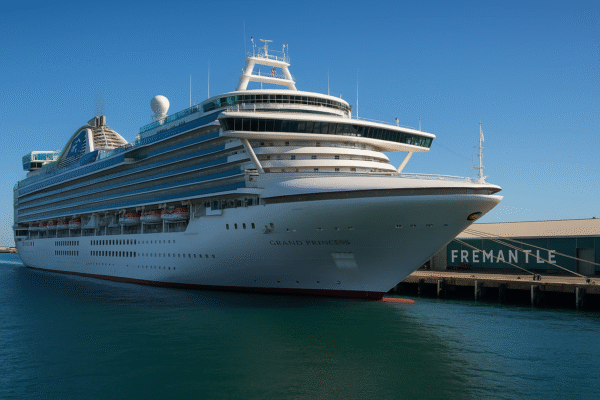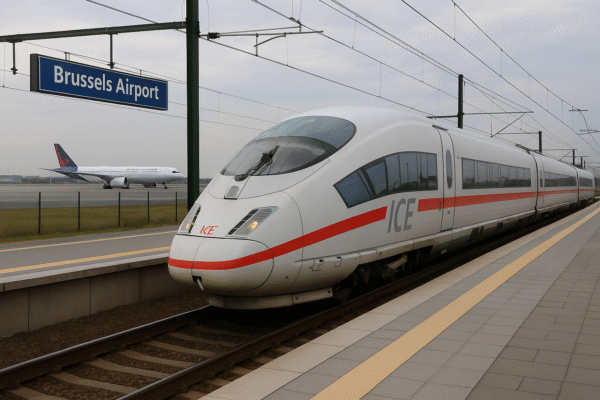Brussels Airport Secures Breakthrough High-Speed Rail Link to Germany
An Accelerating Rail Gateway for Brussels Airport
In a transformative step for European transport integration, Brussels Airport is set to receive its first-ever high-speed rail link in 2026. German rail giant Deutsche Bahn (DB) has submitted an application to operate direct ICE (Intercity-Express) services connecting Brussels Airport-Zaventem with major cities in Belgium and Germany—a long-awaited development to reduce short-haul flights and enhance cross-border mobility.
DB’s proposal, now under review by Belgium’s Federal Transport Regulation Agency (ART), outlines two daily return services between Cologne and Antwerp, with intermediate stops at Brussels Airport, Leuven, and Liège. The launch date is tentatively set for September 7, 2026.
Proposed Timetable: Fast, Frequent, and Future-Focused
Outbound: Antwerp → Cologne
- Departs Antwerp: 07:00 & 13:00
- Stops at Brussels Airport: 07:30 & 13:30
- Liège-Guillemins: 08:20 & 14:20
- Arrives Cologne: 09:30 & 15:30
Inbound: Cologne → Antwerp
- Departs Cologne: 06:30 & 14:30
- Liège-Guillemins: 07:40 & 15:40
- Brussels Airport: 08:30 & 16:30
- Arrives Antwerp: 09:00 & 17:00
The ICE 3neo Velaro MS trains, capable of reaching speeds up to 300 km/h, will run on high-speed tracks to Leuven before transitioning to classic lines between Leuven and Antwerp. This hybrid model maximizes reach while maintaining efficiency.
Long Overdue: A Critical Missing Link for Brussels Airport
Despite its role as Belgium’s busiest international hub, Brussels Airport has lacked a direct high-speed rail connection, unlike peer airports such as Paris Charles de Gaulle or Frankfurt, which benefit from integrated rail hubs.
Currently, all high-speed trains—including Thalys, Eurostar, and existing ICE routes—arrive at Brussels-Midi, requiring a separate local train transfer to reach the airport. This inefficiency has frustrated travelers and policymakers alike for years.
Airport CEO Arnaud Feist has frequently criticized this disconnect, calling it a competitive disadvantage that undermines both passenger convenience and sustainability goals. The new ICE connection aims to rectify this longstanding gap.
Eurostar’s Absence and the New Role of Deutsche Bahn
While Eurostar has historically operated routes between the UK and mainland Europe, the operator has no plans to restore service through Brussels Airport. In remarks to L’Echo, Eurostar spokesperson Céline Ronquetti argued that existing connections via Brussels-Midi are sufficient.
However, Eurostar’s decision to reduce capacity and eliminate some secondary stops—including prior provisional stops at Brussels Airport—has drawn criticism. Transport authorities argue that even a 20-minute transfer can deter business and international passengers, particularly when competing with seamless airport-to-city links elsewhere in Europe.
Deutsche Bahn’s move signals a new competitive landscape and responds to an urgent demand for direct, sustainable, airport-integrated rail service.
What It Means for Regional and International Travel
The planned ICE service unlocks several strategic benefits:
- Cuts short-haul flights: Replacing routes like Brussels–Cologne with rail helps free up airport runway capacity and reduce carbon emissions.
- Improves domestic connectivity: Cities like Antwerp, Liège, and Leuven will gain direct airport access without detours.
- Boosts business and tourism travel: Easier access for German and Belgian travelers encourages cross-border tourism and intermodal commuting.
- Aligns with EU climate goals: The project supports the European Green Deal by transitioning intra-European mobility from air to rail.
Infrastructure Hurdles Before Launch
While DB’s proposed schedule is promising, a successful launch in 2026 will depend on multiple infrastructure updates at Brussels Airport station, including:
- Platform extension to accommodate ICE trainsets
- Customs and border control for non-Schengen transit
- Timetable coordination with SNCB (Belgian rail operator) and Infrabel (infrastructure manager)
Belgian regulators are expected to make a final ruling on DB’s application by early 2026, giving stakeholders time to finalize technical and operational arrangements.
A Step Toward Multimodal, Sustainable Mobility
In a post-pandemic Europe, where climate consciousness is reshaping transport policy, the ICE rail link reflects a continental shift toward intermodal travel. With air, rail, and road access converging at one location, Brussels Airport is evolving into a true multimodal hub.
Unlike most airport trains that simply serve local city centers, this new connection delivers international, long-distance service directly to an airport terminal—offering a viable alternative to connecting flights and road transfers.
Bottom Line
The planned ICE rail link to Brussels Airport is more than just a new route; it marks a historic upgrade for Belgium’s primary airport. For the first time, travelers will gain access to direct, fast, and sustainable international rail from the terminal, closing a critical gap in European transport infrastructure.
As high-speed tracks prepare to serve jet runways, Brussels Airport is charting a new course toward integrated, low-carbon travel—positioning itself not just as an air hub, but as a cross-border, multimodal gateway fit for the future.
For more travel news like this, keep reading Global Travel Wire



















